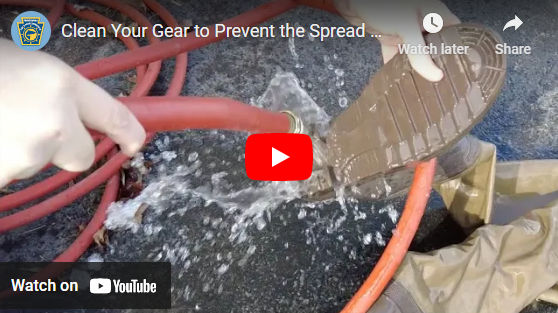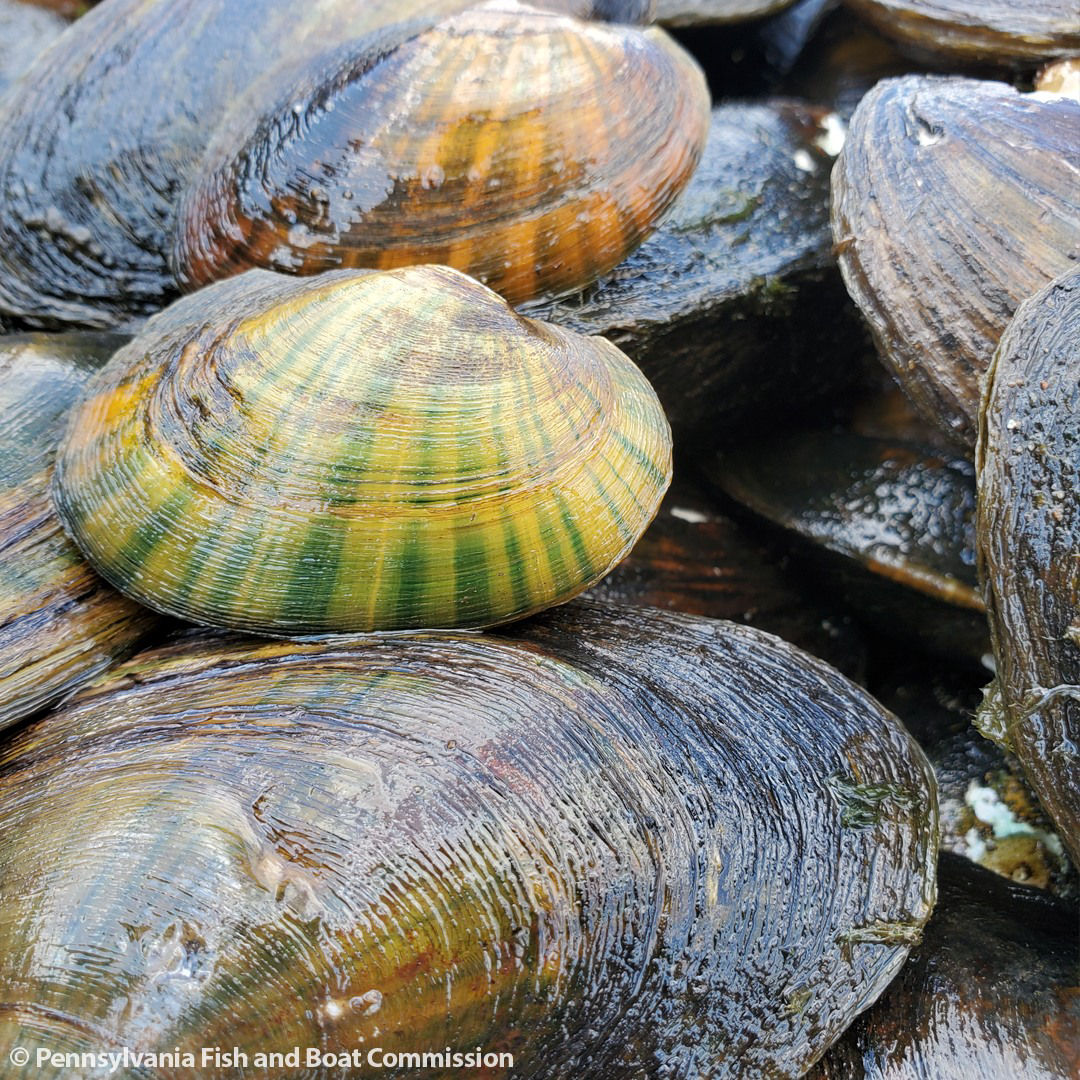Aquatic invasive species (AIS) (also referred to as aquatic nuisance species or ANS) are in contrast to naturalized species, which are non-native but have reached an equilibrium with the ecosystems in which they occur.
In addition to the prohibited species below, some of the least-wanted AIS in Pennsylvania are: New Zealand Mudsnail, Northern Snakehead, Sea Lamprey, Hydrilla, Spiny Water Flea, Eurasian Watermilfoil, Asian Clam and Red-eared Slider (turtle).
It's not always "foreign invaders" that are the problem. White perch and flathead catfish are other examples of species that have turned up where they don't belong. While native to some PA watersheds, they have been introduced to other areas where they are not wanted.
Prohibited Species
The following aquatic species are prohibited in Pennsylvania (sale, barter, possession or transportation).
- Bighead carp (Hypophtalmichtys nobilis)
- Black carp (Mylopharyngodon piceus)
- Crayfish (all species) except when they are either transported
- (i) As bait on, in or about the water from which taken.
- (ii) For testing and scientific purposes or restaurant consumption, adequate measures have been taken to prevent their escape and they are accompanied by documentation stating the point of origin and the destination to which they are to be delivered.European rudd (Scardinius erythropthalmus)
- Quagga mussel (Dreissena bugensis)
- Round goby (Neogobius melanostomus)
- Ruffe (Gymnocephalus cernuus)
- Silver carp (Hypophtalmichtys molitrix)
- Snakehead (all species)
- Tubenose goby (Proterothinus marmoratus)
- Zebra mussel (Dreissena polymorpha)
Stop the Spread of AIS
Anglers and boaters can be the first line of defense against introducing AIS into new waters. Follow simple steps — check, drain, clean and dry gear — to help prevent the spread of AIS.
When retrieving your boat for the day, check the boat, motor and trailer for weeds and other things "tagging along."
- Wash your boat's hull with hot water or with a high-pressure spray.
- Drain livewells, bilges and other compartments.
- Drain all standing water from your boat.
- Don't dump leftover bait into the water you're fishing, unless you collected the bait there.
For more information on cleaning boats and gear, visit our Clean Your Gear page. Take additional precautions to disinfect gear to prevent the spread of New Zealand Mudsnails.
AIS Outreach
View the PFBC's AIS Communication and Outreach Plan
Videos
- Looking for Invasive Crayfish at Opossum Lake
- Getting to Know New Zealand Mudsnails
- Getting to Know Red-eared Sliders
- Getting to Know Rusty Crayfish
- Getting to Know Curly Pondweed
- Getting to Know Hydrilla
- Getting to Know Mystery Snails
Seeing the Unseen: Aquatic Invaders & What's at Stake?
"Seeing The Unseen: Aquatic Invaders & What's at Stake" is a short film by the Western Pennsylvania Conservancy and Great Lakes Media & Film about some of the aquatic invasive species threatening the Lake Erie watershed and nearby region.
Learn how conservation-minded people, groups and organizations, including the Conservancy, are working on efforts to combat and reduce the threat of invasives in these important and vital ecosystems.
Seeing The Unseen: Aquatic Invaders & What's at Stake
"Seeing The Unseen: Aquatic Invaders & What's at Stake" is a short film by the Western Pennsylvania Conservancy and Great Lakes Media & Film about some of the aquatic invasive species threatening the Lake Erie watershed and nearby region.
Position on Non-Native Aquatic Species
Part of the Pennsylvania Fish and Boat Commission's (PFBC) mission is to manage AIS to protect the natural resources and fisheries of the Commonwealth. The PFBC manages AIS by working with partners on education, outreach, monitoring, early detection surveys, rapid response, coordination, and enforcing regulations related to AIS and the introduction or transport of aquatic organisms in the Commonwealth.
AIS are typically defined as non-native aquatic organisms that could establish reproducing populations and cause ecological harm, economic harm, and/or harm to human health when introduced outside of their native range.
Historic stocking of non-native fishes likely caused ecological impacts in some cases, due to the management prioritization of enhancing fish stocks and angling opportunities. Because of their historic introductions, current widespread abundance, and status as supporting important sport fisheries, the PFBC considers these non-native species to be “naturalized” rather than AIS. These naturalized fishes are considered to be non-native species which have fully integrated into Pennsylvania’s aquatic communities and have been historically and contemporarily managed as sportfish resources.
Presently, the PFBC is no longer introducing new non-native fish species outside of their native range. The PFBC will continue to manage and consider more recent or contemporary introductions of non-native fishes and other aquatic species as AIS.





